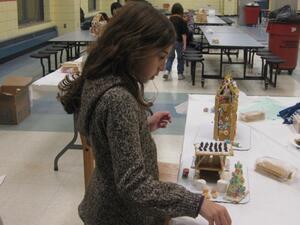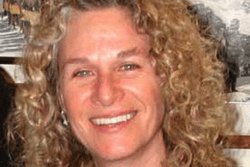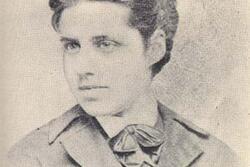An Open Letter to Phyllis Lambert
Dear Phyllis,
I have wanted to be an architect for as long as I can remember. What started as pretending that my doll and I were real estate agents and playing with Legos and other types of blocks (I had them all), turned into a dream for my future. I don’t know when I started saying that I wanted to be an architect; what I do know is that I’m still saying it today.
Growing up I never thought that being a girl would hold me back. I wanted to be a famous architect, and a mother. My mom is a doctor and has always done a great job of balancing a demanding job and her family. The women in my life have shown me that maintaining both a successful career and a rich family life is possible. Whenever I told any of my aunts and uncles, grandparents, and even great-grandparents about my dreams of becoming an architect, they were all excited and supportive.
As I got older I looked for more architect role models and was discouraged to discover that there were so few women at the forefront of the field. Sure there are female architects, but the big names like Frank Lloyd Wright, Daniel Libeskind, and Frank Gehry are all men.
I wanted to know why there were so few female architects that I knew about. After doing some research, I found out that one of the main problems is that, because of how long it takes to become a licensed architect, people are starting their careers right around the time that many women start having kids. There are just as many women as men in architecture school, but only a small percentage become licensed because it’s difficult for women to succeed in architecture and have a family at the same time. In many professions–especially ones that are male-dominated–family is seen as a weakness. I’ve heard stories from women in STEM fields whose co-workers advised them not to put pictures of their children on their desks because it reinforced stereotypes that women are obsessed with children and families; whereas men who had pictures displayed were applauded for caring about their family in addition to work. These double standards reinforce the idea that a woman’s place is in the home, and discourage women from entering the field.
Phyllis, you became an architect in 1963, when the field was even less hospitable to women than it is now. You worked with Ludwig Mies van der Rohe on the Seagram building which is when you decided to pursue architecture. You were a founding member of the conservation organization Heritage Montreal, and you served as its first president from 1975 to 1983. In 1979 you founded the Canadian Centre for Architecture to promote public awareness about the importance of the field.
Although I know that there are female architects (I know some personally), your story is a compelling one of success. At a time when many women’s only role was in the home, and despite your family’s wealth, you still worked incredibly hard to have a successful career. You could have easily rested on your father’s name and money, but what you did instead was help break down gender roles and pave the way for aspiring young architects like myself.
I am a young Jewish woman who wants to be an architect, and your story inspires me. You are a powerful example of a successful Jewish female architect, and your impact in this field shows me that I can do the same. You balanced many projects and responsibilities throughout your career, just like my mom balanced work and family; with both of you as my role models, I feel unstoppable.
This piece was written as part of JWA’s Rising Voices Fellowship.








Great work!
This is so inspirational and beautiful. Thank you!